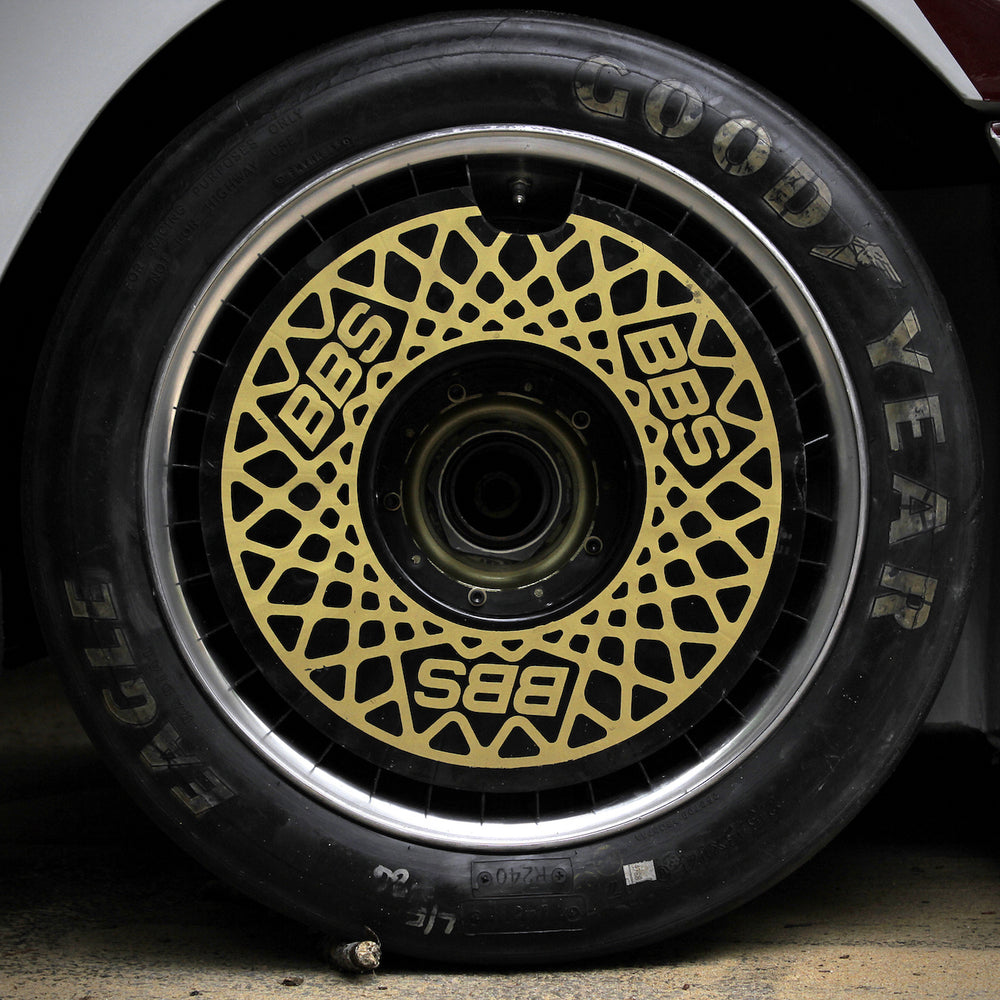Do you remember any periods in your life wherein some nascent but compelling interest managed to imprint itself on every facet of it? Maybe speak like Yoda you did after seeingStar Wars , perhaps a Pokémon backpack to hold your Pokémon lunchbox and your Pokémon Trapper Keeper. Forget embarrassing fad worship, though, because the same dynamic is responsible for one of the most polarizing and unique automotive innovations both on- and off-track: turbofan wheels.





Whatwas the spark for this radical idea—to put bladed covers over wheels to aid in brake-cooling? It was the dawn of true aerodynamic understanding applied to the best sport there is: car racing. What still boggles many minds is just how long this took to happen, this great “catching up” of aero to engines. What I mean can be summed up by the fact that humans managed to supercharge inline-8s decades before they ever thought to put a spoiler on a car. Maybe they were all proto-Jeremy Clarksons, “Power!” being the only thing worth pursuing. Who knows. This is a topic for another day, so let’s get back on track, back to wings and vents and diffusers and louvers and slats, oh my.
Once engineers began to aid gravity in sticking cars to the ground, they went wild with ways wind could be manipulated to produce podium finishes. Group C cars like the infamous Le Mans-winning Porsche 962c and Mazda 787b were the posterchildren for the benefits of modern aerodynamics, but one must only glance at a Porsche 935 to see how we got there. Massive wings and cowcatcher front air-dams made the iconic 911 shape barely recognizable, but the most extreme piece of the 935’s aero package adorned not the body, but the wheels.
Dubbed, in totally consistent ’70s lingo, “turbofans,” these wheel attachments were the ultimate embodiment of form following function. Often painted up in garish but gorgeous contrasting colors, made of exotic magnesiums and kevlars, and sporting downright evil-looking knife-like air ducting, you knew that any car donning a set of ’fans meant business.





For racing applications, the idea was pretty simple: the channels beneath the outer cover would exert a centrifugal force on the hot air that stagnated around the brakes after heavy use, pulling this hot air away from the brakes, keeping them cooler and more effective. So that’s why they were invented, but their enduring legacy has little to do with maintaining optimal rotor temperature: it’s pure style. The kind of aesthetic impact that race cars have in spades. This is why the early ’fans that were not summarily tossed in the trash after races are so sought after today by wheel enthusiasts; no one in 2016 is driving on the street with these attached to their wheels so they can brake later into turns, it’s all about evoking the look and subsequent badassery of race cars.
It’s the same reason the last decade has seen flocks of street-shavingly low German cars, a style that originated to mimic absurdly dumped touring cars like the E30 M3s and 190e Evos that used to spark, rub, and no doubt level out the Nordschleife.



Turbofans are arguably just plain old awesome as material objects, but the real value comes from using their origins and current popularity to understand the relationship between race engineering and street car customization. BBS, the undisputed king of the turbofan, even went so far as to offer non-racing customers bolt-on covers for their RSes (as seen in the red-white colorway in the included advertisement).
BMW, in a flash of brilliance, even equipped the first-generation E34 M5s with honest-to-goodness turbofan wheels from the factory! Polarizing back then for being reminiscent of stodgy whitewall tires, it was a bold move, but one that highlighted just how pervasive and important turbofans used to be.
I think we should look back on this trend with the most rose-tinted glasses we can find; through turbofans we can see the endless pursuit of gaining an edge on competition (they represent an idea taken to the edge) as well as the dynamic relationship between function and form, between physics and style. Anyone who thinks they look like hubcaps just doesn’t get it.




Images provided by Alexander Sobran




















































